Genre: Action Developer: Probe Software Publisher: Arena Players: 1 Released: 1991
When a video game is based on a movie, most gamers are or should be automatically skeptical of its quality. When the said game only has four levels and all of them can be seen in the four screen shots on the back cover, the gamer is very safe to conclude that the game is bad. It should be stated here before proceeding any further that Back to the Future Part III, as more have probably assumed than found out, is a terrible game. Why then should I proceed further? Two reasons: to let loose my rage at having played it from beginning to end and to clearly preserve on the Internet the reasons why it is so bad.
I own this game because it happened to be the black sheep of eight games that I grabbed cheaply on eBay. I didn’t seek it out, and I never meant to play it, but for reasons that can only be described as masochistic, I played it from start to finish. I did this despite the fact that it is developed by Probe, a company that I have loathed since the original Mortal Kombat. I gave it a chance even though the initial presentation including the Back to the Future theme was so poorly done that I wanted to turn off the television. And I forced myself to continue to the end despite the first level being frustrating enough to write the game off without further progression.
Normally, games stick to one style of gameplay, as being overly ambitious can lead to a variety of shallow play modes rather than one really solid style. Occasionally developers succeed (e.g. Red Zone), but it isn’t very often. As stated, there are only four levels in Back to the Future: Part III. They are all pictured on the back cover; they are all different, and they are all poorly executed. Having only four levels is bad enough, but when they all try to do something different and all fail, it makes an already bad game, even worse. Since two of the levels are platformers, I will classify Back to the Future: Part III as a platformer.
In the first of the two platform based levels you play the eccentric Doc Brown chasing a runaway wagon like in the movie. During this level you have to avoid rocks, gunmen, birds and pits by shooting, jumping and ducking. Although it is the first level, it is the hardest in the game and not because it’s challenging; just frustrating. The controls aren’t very responsive though they are much better than the other levels, and the whole stage comes down to memorizing each bit and making as few mistakes as possible. If you fail you are greeted with an image showing the wagon tumbling (I saw this about fifteen times) and if you pass you see the “well done, you saved the damsel” screen (I saw this once, and hopefully I never will again). The other platform level is the final stage on the train where you have to collect the “speed logs” and get to the front of the train, but I’ll get to that later.
After completing the hardest part of the game, you take on the role of Marty for the next three stages. The first is a shooting gallery at the local fair where Marty has to prove how good a shot he is. This stage is simple, especially after the memory frustration of the last one. The directional keys aim your gun, and as long as you shoot most of the ducks, birds and cowboys and avoid the innocents you will pass without much trouble. Marty has just proven how good a shot he is to the good people of Hill Valley, making it obvious that he will then go on to dispense justice through the barrel of a gun? right? Wrong.
The next stage has you throwing pies (yes, pies) at Buford Tannen’s gang. This is probably the most poorly put together of the four. Set from an overhead perspective you have to take out each member of the gang with a well-aimed pie shot. The directional buttons won’t help much as each seems to take Marty a completely different way. With some trial and error it becomes easier but never fun. After taking out all the gang members, Buford comes out, and a few pie shots will take him down as long as Marty isn’t shot too much. This is the least playable and worst-looking stage in the game but the final stage is not much better.
I always got annoyed as a child when I watched the third Back to the Future movie. Marty is given that awesome gun, but he never ever uses it. He wore it around, always made himself look like he would but in the end, he never did. You’d think in the game of the movie you would actually get to use the gun, but you don’t. Instead, you prove how good a shot you are and then use pies. I thought the final train level might be different, but it wasn’t, and it even reassures players in the instruction booklet that Marty can “throw some of the pie trays he has left over from the last level.” It’s been a while since I saw the movie but I don’t remember any pies.
The last level has you traveling along throwing pies at cowboys, avoiding poles, collecting speed logs and most of all trying to deal with the awful clipping. In the final level it is never safe to assume that Marty won’t suddenly tumble off the train only to be returned by his hoverboard. Every time a member of Buford’s gang manages to knock you off, they follow you off the train. Perhaps they feel guilty after killing you, but more likely they don’t want to be the only ones on the screen in this horrible game. As long as you get to the front with all the speed logs in the set amount of time and avoid all the annoying steam blasts, you will pass the level and the game.
There isn’t really much that needs to be said about the music or sound effects in this game, so one short paragraph will be enough. Frankly, this is way below 16-bit quality, even considering it was released early in the generation. Both the Master System and NES could easily have replicated the same graphics and sound and there are plenty of games on those respective systems that are much better. The overall presentation is simply terrible.
When you review a good game or even a semi-competent game, it is extremely difficult to mention everything but with Back to the Future: Part III, I have no trouble at detailing just about everything. The one positive thing I have to say for the game is that you never have to restart the whole thing after failing a level. Had this been the case, I am sure I would have never had enough patience to play through all of it. After completing the game it tells you that the future has not yet been written, which was little reassurance since all I cared about was going back in time to stop myself from ever playing it.
SCORE: 1 out of 10


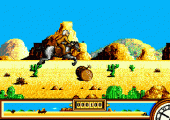
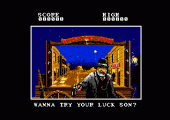
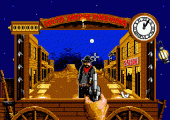
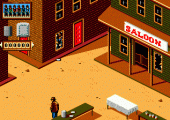
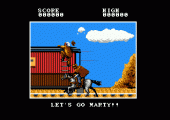
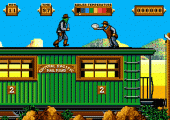
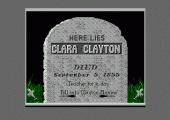
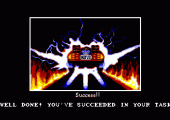
Pingback: Video Game Reviews and Articles | The Essential Malady
Pingback: Video Game Reviews & Articles | The Essential Malady
fool me once shame on you fool me twice shame on me. After a very bad (and short as hell) Back to the Future Part.2 on Master System, Marty comes back on Megadrive/Genesis with the same formula. Odd graphisms, jerky controls and unbelievable emptiness. Just take a look at its first level if you want a really retro PGM-like challenge. CONCLUSION: 1.5/20
Pingback: Sega-16 Articles |